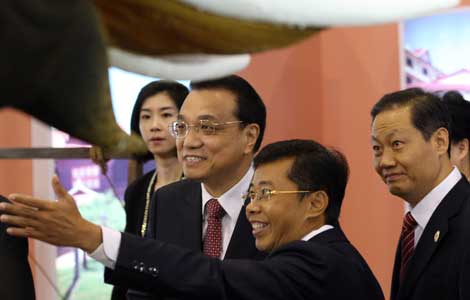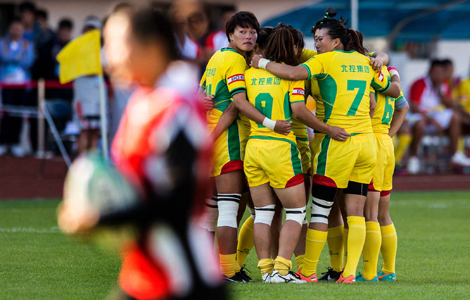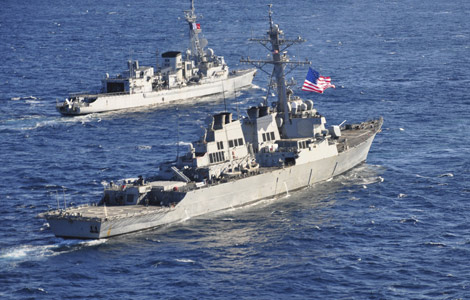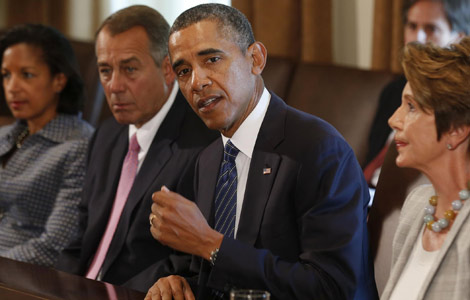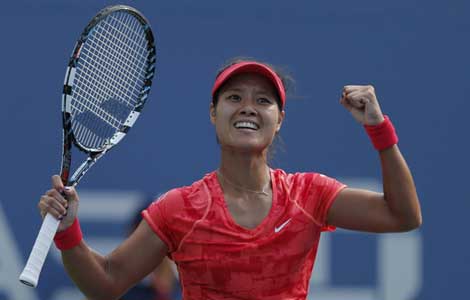Strategic synergy for global security
Updated: 2013-09-05 07:45
By David Gosset (China Daily)
|
||||||||
Among the dynamics reshaping Eurasia, the transformation of relations between China and Turkey does not get the attention it deserves. Certainly from a Western perspective it is a geopolitical blind spot.
The differences between the two countries appear, at first glance, considerable. China's territory is more than 10 times larger than Turkey's, its population 20 times larger and the Chinese GDP more than 10 times that of Turkey.
But if one takes into account the countries composing the International Organization of Turkic Culture Turkey, Azerbaijan, Kazakhstan, Kyrgyzstan, Turkmenistan and Uzbekistan the asymmetry between the Turkic sphere and the Chinese world is substantially reduced.
Moreover, there are striking similarities between the two members of the G20. Both countries share indelible imperial memories. The Yuan (1271-1368), Ming (1368-1644) and Qing dynasties (1644-1911) were contemporary with the Ottoman Empire (1299-1922), and the sumptuous Chinese porcelain collection of the Topkapi Palace, the residence of the Ottoman sultans for four centuries, illustrates the ancient interactions between the two empires.
One does not regularly associate Sun Yat-sen (1866-1925) with Mustafa Kemal Ataturk (1881-1938), but the two have nonetheless a lot in common. In the face of decadent systems and Western imperialism, they built two new nations the Republic of China, established in 1912, and the Republic of Turkey, founded in 1923. They terminated obsolete regimes and put their people on the road of modernity.
The sequence of events following World War I and leading to the end of the Ottoman Empire differs from those surrounding the fall of the Qing Dynasty, but Sun's Three Principles of the People and Ataturk's thoughts, as developed in what is known as The Speech (1927), were inspired by the same vision of cultural rebirth and national independence.
After 1949, the Cold War separated Beijing and Ankara; the Turkish Brigade fought in Korea under the United Nations command from 1950 to 1953; and under its third president, Mahmut Celal Bayar, Turkey joined the North Atlantic Treaty Organization in 1952.
Despite the establishment of diplomatic relations between the two powers in 1971, the issue of Uygurs, a Turkic ethnic group living within China in the Xinjiang Uygur autonomous region, complicated relations already characterized by ideological antagonism, but after the collapse of the Soviet Union, the two countries found new ground for convergence.
Last year, Turkish Prime Minister Recep Tayyip Erdogan visited Urumqi, capital of the Xinjiang Uygur autonomous region, a visit that signaled both sides had reached agreement on the idea that Xinjiang could be a bridge and not a point of friction between the Chinese and Turkic worlds.
Erdogan's emotional stop in Xinjiang followed Xi Jinping's visit to Turkey, an occasion for the then vice-president of China to sign for $4.3 billion in Sino-Turkish business deals.
The potential for the development of Sino-Turkish trade is evident, and the recent decision by Ankara favoring a Japanese-French consortium to build a second nuclear plant while China was a bidder a $22 billion contract does not question the shared long-term commitment to deepen the Sino-Turkish connection.
In 2012, bilateral trade was $19 billion and it will reach $100 billion before 2020 with more cooperation in the construction of infrastructure, agriculture, tourism, as well as possible business collaboration in Central Asia, the Middle East and Africa.
If the development of the Sino-Turkish relations can be interpreted as another example of impactive South-South relations within an increasingly multipolar world, it reveals its full significance in a Eurasian geopolitical context.
To maintain overall Eurasian stability, it is vital that a reemerging China, the global Middle Country, and a rising Turkey, the transcontinental pivot at the intersection of the Muslim world, Europe and Russia, do not collide. Sino-Turkish strategic synergy can be also a generator of growth and security on the "world continent".
In this perspective, Ankara becoming a dialogue partner of the Shanghai Cooperation Organization this year is a constructive step. As a NATO member and a European Union candidate country, Turkey acts not only as a bridge between the EU and the SCO, but also between NATO and the SCO.
In The Grand Chessboard, Zbigniew Brzezinski reflected on the relations between the United States and Eurasia. He argued that if a chaotic Eurasia constitutes a threat to American interests, Washington has to make sure that none of the Eurasian players dominates the world continent or the US would risk becoming peripheral.
In other words, the US needs to be involved in Eurasian affairs to create an order congenial with its interests, but on "the grand chessboard" it behaves in accordance with the spirit of the old doctrine of divide and rule.
However, the patient construction of a more cohesive Eurasia, bringing closer the European Union, the Turkic sphere, Russia and China, should not be perceived as a strategy to marginalize or diminish US power, but as a source of global security and a guarantee of a better balance between the New World and Eurasia.
The author is director of the Academia Sinica Europaea at the China Europe International Business School, Shanghai, Beijing and Accra, and founder of the Euro-China Forum.
(China Daily 09/05/2013 page8)
Most Viewed
Editor's Picks

|

|
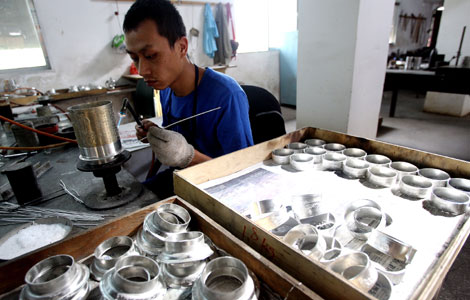
|

|

|

|
Today's Top News
Senate panel votes to authorize force in Syria
S. Korea a model for innovation: experts
Xi, Putin meeting to focus on 'mega projects'
US divided over Syria attack
Ex-railway deputy chief pleads guilty
Deal ensures supplies of natural gas
Writers sue Apple for compensation
Campaign launched against child abuse
US Weekly

|

|

